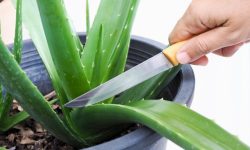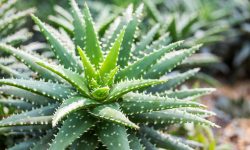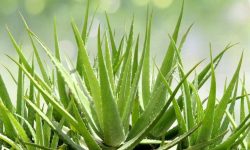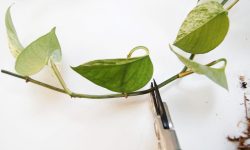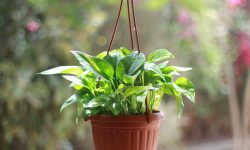Aloe vera is one of the easiest plants to grow, yet it becomes even more impressive when you understand how to help it reach its full potential. Many people keep aloe for its soothing gel, but few realize how much healthier and larger it becomes with proper care. When aloe thrives, its leaves grow thicker, stronger, and more vibrant. The plant develops a deeper color and produces new pups that show its natural strength. Growing aloe is more than placing a pot on a sunny windowsill. It requires a simple understanding of light, soil, and hydration. These small details shape the plant’s long-term health.
Watching aloe vera grow well is rewarding because the plant responds quickly to good conditions. When cared for correctly, it stands tall with firm leaves and steady growth. Aloe becomes a beautiful part of your home while offering practical benefits when you need them. People often underestimate how much the plant can improve its size and quality with consistent care. Each simple step leads to bigger leaves, a wider base, and a stronger root system. When you understand how aloe grows, you gain the tools to support its natural rhythm. This knowledge turns a common plant into a thriving, impressive feature in any space.
Understanding Aloe Vera’s Natural Growth Pattern
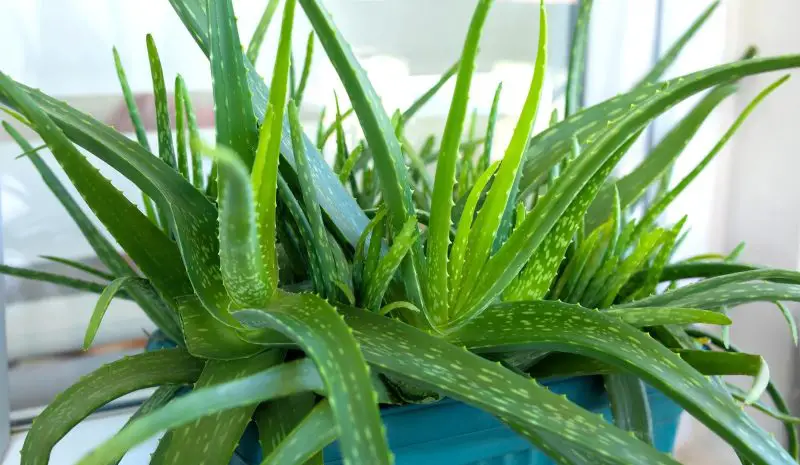
Aloe vera grows in a way that reflects its desert origins, which means it thrives when conditions mimic its natural environment. The plant stores water in its leaves to survive long dry periods, so the leaves become thicker as the plant becomes healthier. Its growth begins at the center, where new leaves emerge in a tight spiral. These inner leaves slowly expand and push older leaves outward. When aloe receives enough light and proper soil structure, this growth pattern becomes steady and predictable. Each new leaf shows how well the plant is adapting to its environment.
The root system also plays a major role in aloe’s growth rhythm. Aloe roots prefer airy, dry soil that allows them to breathe. When the soil drains well, the roots spread more evenly and anchor the plant deeply. Healthy roots lead to stronger leaves and wider growth. If the soil stays wet for too long, the roots cannot function properly. This slows the entire growth cycle and weakens the plant over time. Understanding this relationship helps you create conditions that support both the roots and the leaves. Stable, light soil encourages reliable growth.
Aloe vera also uses light to guide its shape and strength. When the plant receives enough sunlight, it remains compact with firm leaves. The color deepens, and the plant shows strong posture. When light is limited, the leaves stretch toward the source, becoming thin and weak. This stretching slows the plant’s natural rhythm and reduces its overall strength. By watching your aloe’s shape and color, you can understand what it needs and adjust its environment. Recognizing these natural patterns allows you to grow aloe vera with confidence. A plant that follows its rhythm will grow larger, stronger, and more vibrant over time.
Choosing the Best Location for Strong, Healthy Aloe Growth
Selecting the right location is one of the most important steps for growing a bigger, stronger aloe vera plant. Aloe needs bright, indirect sunlight to maintain firm leaves and a compact shape. When placed in a location with steady daylight, the plant absorbs energy that supports thicker leaf growth. A bright windowsill facing south or east works well because it offers strong light without constant heat. If the light becomes too intense, the leaves may fade or develop light patches. When this happens, shifting the plant slightly away from direct sun helps protect its natural color.
Temperature also influences aloe’s location needs. The plant thrives in warm rooms that stay above 20°C for most of the day. Cooler rooms slow its natural rhythm and reduce leaf expansion. Sudden temperature changes may cause stress, especially during winter. Keeping the plant away from drafts, air conditioners, or heaters supports steady growth. Aloe responds best to a stable environment where the temperature gently rises and falls. When the plant receives warmth consistently, it grows wider at the base and produces stronger new leaves from the center.
Humidity plays a smaller role, but it still affects overall growth. Aloe prefers dry air because excess moisture slows evaporation from the leaves. High humidity encourages fungal problems, especially in tightly packed growth. Choosing a location with good airflow helps the plant stay dry and balanced. Rooms with natural air movement support healthier leaves and prevent moisture buildup. By selecting a place with bright light, warm temperatures, and low humidity, you create the perfect environment for aloe vera. This combination gives the plant everything it needs to grow larger, stronger, and more resilient over time.
Preparing the Ideal Soil Mix for Bigger and Stronger Aloe Plants
Aloe vera grows best in soil that mimics its native desert conditions, which means excellent drainage and light texture are essential. The ideal soil mix allows water to flow through quickly while giving the roots enough air to stay healthy. A succulent or cactus mix works well, but adding extra perlite improves airflow and prevents compaction. When the soil stays loose, the roots expand more freely, which leads to thicker leaves and stronger overall growth. Heavy, compact soil traps moisture and slows the plant’s natural rhythm. Good soil gives aloe a stable foundation to grow larger with confidence.
Nutrient balance also matters for long-term development. Aloe does not need rich soil, but it does benefit from mild mineral content. A small amount of coarse sand can enhance structure and improve drainage. Sand helps keep the mix dry while supporting root spread. The roots depend on this dry environment because moisture-related stress weakens the plant. Soil that drains well creates a healthier balance between hydration and dryness. This balance encourages aloe to produce wider leaves and a firmer base. Proper soil preparation ensures the plant grows steadily and resists common issues.
The pot you choose also affects the soil’s performance. Containers with drainage holes prevent water from collecting at the bottom. Clay pots work especially well because they allow moisture to evaporate through the sides. Plastic pots retain more water, so soil mix adjustments become more important. Before planting, slightly moisten the soil to settle it without soaking the roots. This gentle preparation helps the plant adjust quickly once placed in its new environment. When aloe grows in soil designed for its needs, it develops strong roots and impressive leaves. A well-prepared soil mix is a key step toward a bigger, stronger aloe plant.
Planting Aloe Vera Correctly for Long-Term Strength
Planting aloe vera correctly establishes the foundation for its long-term strength and impressive growth. The process begins with selecting a pot that drains well so excess water never remains trapped around the roots. A pot with several drainage holes allows moisture to escape quickly, which prevents rot. Place a thin layer of the soil mix at the bottom, then lower the aloe into the pot with its roots spread naturally. The base of the plant should sit slightly above the soil line. This positioning keeps water away from the crown, where excess moisture can cause serious damage. Filling the sides with soil and pressing gently helps stabilize the plant without compacting the mix.
After planting, the aloe needs time to recover from the disturbance. Its roots may feel stressed, especially if they were trimmed or adjusted during repotting. Allow the plant to rest for several days before adding water. This resting period gives small wounds on the roots time to dry and form a protective callus. Once the plant has settled, give it a light watering so the soil can hug the roots gently. This first hydration encourages the plant to anchor itself deeper and begin adjusting to its new environment. Avoid heavy watering, as the aloe cannot absorb large amounts of moisture at this stage.
Stable environmental conditions help the newly planted aloe grow with confidence. Place the plant in bright indirect light so it can absorb energy without facing heat stress. Warm temperatures support root activity and encourage the leaves to regain firmness. Avoid moving the plant during the first few weeks because changes in light or airflow interrupt its natural rhythm. When the aloe begins producing new leaves from the center, it shows successful adaptation. Correct planting ensures the plant develops thicker leaves, a stronger base, and long-term resilience.
Watering Aloe Vera Properly for Bigger, Thicker Leaves
Watering plays one of the most important roles in helping aloe vera grow bigger and stronger. Because aloe is a desert plant, it stores water inside its leaves and prefers long drying periods between waterings. When aloe receives water too frequently, the roots become stressed and the leaves soften. Proper watering begins with a simple routine: allow the soil to dry almost completely before watering again. When the top layers feel dry, water the soil thoroughly until it drains through the bottom. This deep watering encourages roots to grow downward, building a stronger foundation for larger leaf growth.
Understanding seasonal changes also helps you adjust your watering pattern. Aloe vera grows actively in warm months, which means the soil dries faster and the plant uses more water. During this time, consistent but spaced watering supports thick leaf development. In cooler seasons, aloe slows its growth and needs far less water. Overwatering during cold months can cause root rot because the plant absorbs moisture slowly. Paying attention to the season helps prevent stress and gives aloe the stability it needs to grow steadily. Balanced watering supports both root health and leaf strength.
Observation is key to mastering the watering needs of aloe vera. When the plant receives the right amount of water, the leaves stay firm and upright. They appear full, with a natural bounce when pressed. Overwatered aloe shows pale, soft, or drooping leaves. Underwatered aloe becomes thin with wrinkled surfaces. Adjusting your approach based on these signs ensures the plant continues developing properly. With careful watering, aloe vera grows broader leaves, a wider base, and stronger roots. This balanced routine is essential for creating a bigger, healthier plant that thrives throughout the year.
Providing the Ideal Light Conditions for Faster and Stronger Aloe Growth
Light is one of the strongest forces shaping aloe vera’s size, strength, and overall health. Aloe thrives in bright, indirect sunlight because this level of light mimics its natural desert environment. When the plant receives enough brightness each day, its leaves grow thicker and stay upright. The center of the plant begins producing new leaves more quickly, and the color deepens into a rich, vibrant green. A spot near an east- or south-facing window often delivers the right balance of strength and softness. Too little light causes aloe to stretch, creating weak, thin leaves that grow toward the nearest light source.
Direct sunlight, however, must be managed carefully. While aloe enjoys strong light, intense midday sun can cause leaf tips to dry or form pale spots. This is especially true for young plants or freshly repotted aloe that still needs time to adapt. If your plant sits in a location with harsh afternoon light, shifting it slightly away from the window or using a sheer curtain helps protect the leaves. Light that’s bright but filtered encourages the plant to grow wide rather than tall. Maintaining this balance allows aloe to develop a sturdy leaf structure that supports long-term growth.
Consistency is the final key in providing ideal lighting. Aloe vera responds best when it receives similar levels of light each day without sudden changes. Moving the plant too frequently confuses its growth direction, causing uneven leaf development. If your home receives limited natural light, you can use a grow light positioned at a gentle angle. Aim for several hours of steady brightness to encourage faster growth. With stable, strong light, aloe vera builds dense leaves, a firm base, and a healthy growth rhythm. Light becomes the driving force behind its transformation into a bigger, stronger plant.
Feeding Aloe Vera the Right Way for Steady, Vigorous Growth
Aloe vera grows well with minimal nutrients, but the right feeding routine helps it develop thicker leaves and a stronger base. The plant relies on its roots to absorb minerals slowly, so a gentle approach works best. Using a diluted succulent fertilizer during warm months supports leaf expansion and root activity. The key is moderation because aloe stores nutrients in its leaves and cannot handle strong formulas. Light feeding boosts the plant’s natural growth rhythm without overwhelming it. When aloe receives small but consistent nutrients, it builds firmness and deeper color.
Timing matters as much as the type of fertilizer. Aloe absorbs nutrients most efficiently during its active growing season in spring and summer. Feeding once every four to six weeks during this period supports steady growth. In cooler seasons, the plant enters a resting phase. Fertilizing during this slow cycle stresses the roots and affects long-term health. Allowing aloe to rest without feeding helps it stay balanced. Understanding this rhythm ensures the plant receives nutrients only when it can actively use them. A well-timed schedule encourages strong roots and broad leaves.
Observing your aloe helps you adjust feeding for the best results. When the plant receives proper nutrients, its leaves stay firm and hold a rich green hue. Growth from the center becomes more frequent, and pups form more easily at the base. Overfeeding, however, causes leaf tip burn or softness. If these signs appear, pause feeding and allow the soil to flush naturally with occasional deep watering. Using fertilizers mindfully protects the plant and keeps its growth stable. Proper feeding strengthens aloe vera from the inside out, allowing it to become larger, healthier, and more resilient over time.
Repotting Aloe Vera to Encourage Bigger, Faster Growth
Repotting aloe vera at the right time helps the plant expand its root system and develop stronger, wider leaves. As aloe grows, its roots slowly fill the pot and begin to limit natural expansion. When the plant becomes root-bound, growth slows and the leaves may thin over time. Repotting gives the roots more room to spread and improves airflow within the soil. A slightly larger pot—just one size up—supports steady growth without retaining excess moisture. This gentle shift allows the plant to continue growing at a healthy pace and build a stronger, more balanced structure.
The repotting process must be handled carefully to reduce stress. Begin by gently removing the aloe from its current pot and shaking away loose soil around the roots. Inspect the root system for soft or damaged areas and trim them if necessary. Healthy roots appear firm and light in color. Place the plant into fresh, well-draining soil and ensure the crown sits slightly above the soil surface. This prevents moisture from collecting around the base. Press the soil gently so the plant remains stable without compacting the mix. A correctly repotted aloe adjusts quickly and begins forming new roots.
After repotting, aloe vera needs time to settle into its new environment. Avoid watering for several days so any small root injuries can dry and callus. Once the plant adjusts, begin watering lightly and resume normal care. Place the aloe in bright indirect light and avoid sudden temperature changes. Over the next few weeks, you will notice firmer leaves, improved color, and new growth emerging from the center. Repotting not only gives aloe fresh space but also resets its growth rhythm. With the right timing and technique, this step helps the plant grow bigger, stronger, and more vibrant.
Managing Aloe Vera Pups to Promote a Larger, Healthier Mother Plant
Aloe vera often produces pups around its base as it matures. These small offsets draw energy from the mother plant while developing their own tiny root systems. Although pups are signs of a thriving aloe, allowing too many to grow at once can limit the mother plant’s size and strength. When the pot becomes crowded, the roots compete for nutrients and water. This competition slows growth and may lead to thinner leaves. Removing pups at the right time helps the mother plant redirect energy toward stronger leaf development and a wider base.
The best time to remove pups is when they reach a size large enough to survive on their own. A pup that stands firmly in the soil and shows several leaves usually has its own root cluster. Gently pulling or cutting the pup away from the mother plant reduces strain on both. Once separated, the mother plant has more room to spread her roots and grow larger leaves. Removing pups also improves airflow around the base, which helps prevent moisture buildup and potential rot. This open space supports healthier conditions for long-term development.
Managing pups also encourages faster growth from the mother plant’s center. With fewer offsets drawing nutrients, the plant can focus on forming new leaves and maintaining a strong structure. After removing pups, give the mother aloe a few days to rest, then water lightly to support recovery. You may also repot the plant if the roots remain tight in the current container. Proper pup management helps both the mother plant and the new offsets thrive. This simple step leads to bigger, stronger aloe vera plants that grow with balance and stability.
Protecting Aloe Vera from Common Growth Problems
Overwatering and Soil Problems That Slow Aloe Growth
Overwatering is the most frequent issue that weakens aloe vera and prevents it from growing larger. Aloe roots need long, dry intervals to breathe, and constant moisture blocks oxygen flow. When water lingers in the soil, the roots begin to soften and lose their strength. This slow decline often appears first in the leaves, which become pale or mushy. Many growers mistake this softness for dryness and add more water, which worsens the problem. Allowing the soil to dry almost completely between waterings keeps the roots healthy and encourages deeper growth.
Soil problems contribute to the same stress. Heavy or compact soil holds moisture longer than aloe vera can tolerate. The plant prefers gritty, well-draining mixes that let water pass quickly. When the soil stays tight, the roots struggle to expand, reducing overall plant size. Switching to a succulent mix with airflow-friendly ingredients helps restore balance. Good soil structure supports stronger leaf formation and prevents the crown from staying wet. Correcting soil and water habits gives aloe the stable environment it needs to grow wider, thicker, and more resilient.
Light, Temperature, and Environmental Stress
Insufficient light is another issue that limits aloe vera’s natural strength. Aloe needs bright, steady light to develop thick leaves and maintain a compact shape. When light is weak, the plant stretches toward the nearest window, creating thin, weak growth. This stretching slows new leaf development and reduces the plant’s overall energy. Providing a location with bright indirect sunlight helps aloe rebuild firmness. Too much direct sun, however, may scorch sensitive tips, especially on young plants. Balancing light intensity ensures steady, healthy growth.
Temperature stress also affects aloe’s long-term health. Cold rooms slow activity inside the leaves, while sudden drafts cause them to lose firmness. Excess heat dries the leaf edges and disrupts moisture balance. Aloe thrives when temperatures stay warm and stable. Maintaining distance from heaters, air conditioners, and drafty windows protects the plant from shock. A calm environment allows aloe to continue growing from the center without interruption. Reducing environmental stress keeps the plant strong, vibrant, and ready to expand.
Pests, Weak Roots, and Improper Potting
Pests such as mealybugs and scale insects can weaken aloe vera by feeding on its sap. These pests settle between the leaves, causing slow growth and leaf discoloration. Aloe with pests often loses energy as the insects drain moisture. Cleaning the leaves gently or using plant-safe treatments removes these pests before they spread. Healthy aloe plants resist infestations better, but early detection is still important. Watching for sticky residue or small white clusters helps you address issues before they affect the entire plant.
Improper potting choices also lead to growth problems. Pots without drainage trap excess water, while deep containers hold moisture for too long. Roots sitting in wet soil cannot function well and may rot. A breathable pot with drainage holes allows moisture to escape and keeps the root zone balanced. Repotting with fresh soil helps the plant recover from stress and grow with more stability. When the roots remain strong, aloe produces new leaves more quickly. Ensuring proper potting protects the plant’s foundation and supports bigger, stronger long-term growth.
FAQs About Growing Aloe Vera
How often should I water aloe vera for the best growth?
Aloe vera grows best when the soil is allowed to dry almost completely before watering again. Most plants need water every two to three weeks, depending on temperature and light. Deep but infrequent watering encourages strong root growth and prevents moisture-related stress.
Why are my aloe vera leaves becoming thin or droopy?
Thin or droopy leaves usually indicate insufficient light or inconsistent watering. Aloe needs bright, indirect sunlight to maintain firm leaf structure. When light is weak, the plant stretches and loses thickness. Correcting light exposure and watering habits helps the leaves regain strength.
What type of soil helps aloe vera grow bigger?
Aloe vera thrives in a gritty, fast-draining soil mix that prevents water from staying around the roots. Succulent or cactus soil blended with perlite or coarse sand works well. This structure supports strong roots and encourages thicker, wider leaves over time.
When should I repot my aloe vera plant?
Repot your aloe when the roots fill the pot or when the plant begins producing pups frequently. A slightly larger pot gives the roots space to expand. Repotting every one to two years helps refresh the soil and supports faster, healthier leaf development.
Why is my aloe vera not growing even with good care?
Aloe vera may slow growth due to low light, cold temperatures, or old compacted soil. Even if watering is correct, the plant may need brighter light or a fresh soil mix. Ensuring warmth, airflow, and nutrient balance restores its natural growth rhythm.
Conclusion
Growing aloe vera into a bigger, stronger plant becomes simple once you understand its natural rhythm and create the right conditions. With proper light, well-draining soil, and thoughtful watering, the plant responds with firm leaves, steady growth, and a healthier base. Repotting at the right time and managing pups also help aloe focus its energy where it matters most. Each small adjustment encourages better resilience and long-term strength. As you follow these steps, aloe transforms from a simple houseplant into a thriving, impressive part of your home. Consistent care brings out the plant’s full potential and lasting beauty.

